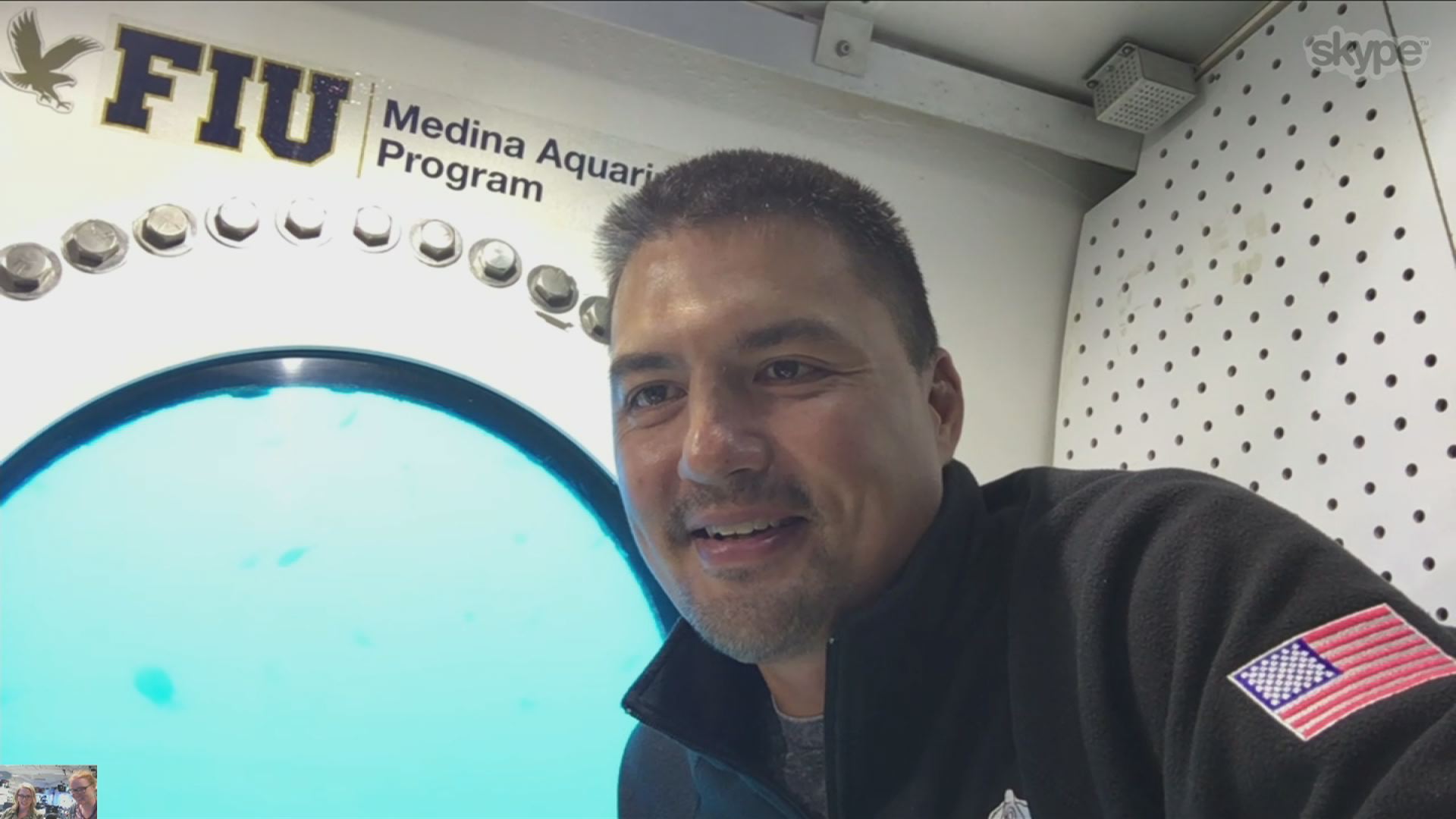At first glance, it sort of looks like the International Space Station. That is, until you look out the window and see a fish.
The photos from the NASA Extreme Environment Mission Operations project – or NEEMO for short – might look like something out of a Wes Anderson movie, with multiple astronauts in SCUBA suits waving outside of a mock ISS.

The purpose of the mission though, is actually pretty serious. They’re helping scientists learn about some of the environmental issues astronauts face in space – something that could help them prepare for missions to Mars and other far off destinations.
Right now, a crew of six people are spending 10 days in the Aquarius, an undersea research station off the coast of Key Largo, Florida. It’s deployed next to a deep coral reef 62 feet below the surface.
Kjell Lindgren is the commander of this mission. He has degrees from the Air Force Academy and Colorado State University, and has also spent 141 days in space as an astronaut.
“We’re doing real science down here,” Lindgren said from the Aquarius, “but during the day, we’re also going outside, so we’ve been wearing helmets, wetsuits and going out and conducting simulated space walks.”

“… from early in the morning to when we go to bed at night, the things we’re doing are very similar to what we do in space – the lines, the maintenance, doing science.”
The biggest difference? Lindgren says it’s what he sees out the window – and you might be surprised about what whether he thinks space or the ocean is more jarring.
“You know, when you look out the window of the space station, you see the surface of the Earth – you see things that are very familiar to you from looking at maps and looking at the globe, from America, to the Bahamas, to Africa, to the Mediterranean,” Lindgren said. “Beautiful clouds and amazing sunsets.
“Here, when I look around, I get to see things that I don’t have a lot of familiarity with. I see a lot of sea life outside our windows. I can actually feel when the currents pick up and the whole habitat rocks just a little bit, and we can feel the pressure in our ears as the waves move up and crest the surface and the hydrostatic pressure above the atmosphere and we can feel that in our ears, and that is different.”
Another big difference between the Aquarius and the ISS is gravity. Lindgren says he’s used to floating around in space, but being able to stand up and do things normal in the underwater laboratory is a little bit different.
And then, there’s the fact that he looked out his window Friday and spotted four eagle rays floating past the window. They call the views “Aquanaut television.”
“Anytime we’re sitting in this room and chatting and having dinner, we’re looking out the window and looking to see what will swim by,” Lindgren said.
When Lindgren spoke to 9NEWS via Skype, another member of the crew was standing right behind him.
He says the experience of being in a confined space with six people is a big part of training for a space mission. In fact, NASA actually trains you for “expeditionary behavior.” Part of this is learning how not to annoy other people.
If people are able to get their tasks done and help each other out, he says “it works really well, and it’s a great model for how things work on the International Space Station.”
Lindgren has a wife and three kids, and while he says they were “a little bummed” that he’ll be gone for three weeks during the start of summer vacation for NEEMO, he’s been able to stay in touch through Skype.
“It’s been fun to share the habitat and what we’re seeing outside with them,” Lindgren said.
Once Lindgren and his crew finish the mission, the have to spend 24 hours outside of their habitat before they get on a commercial flight – otherwise, the pressure change could spell big trouble.
Despite the challenges, Lindgren admits that he’s in awe of what he gets to do. He’s dreamed of being an astronaut for almost his entire life.
“It never occurred to me that it would come true, and the ability to make this come true and to work with NASA and all the organizations that are part of this … I’m grateful,” he said.
You can read more about the NEEMO mission here: https://go.nasa.gov/2s4StlI


